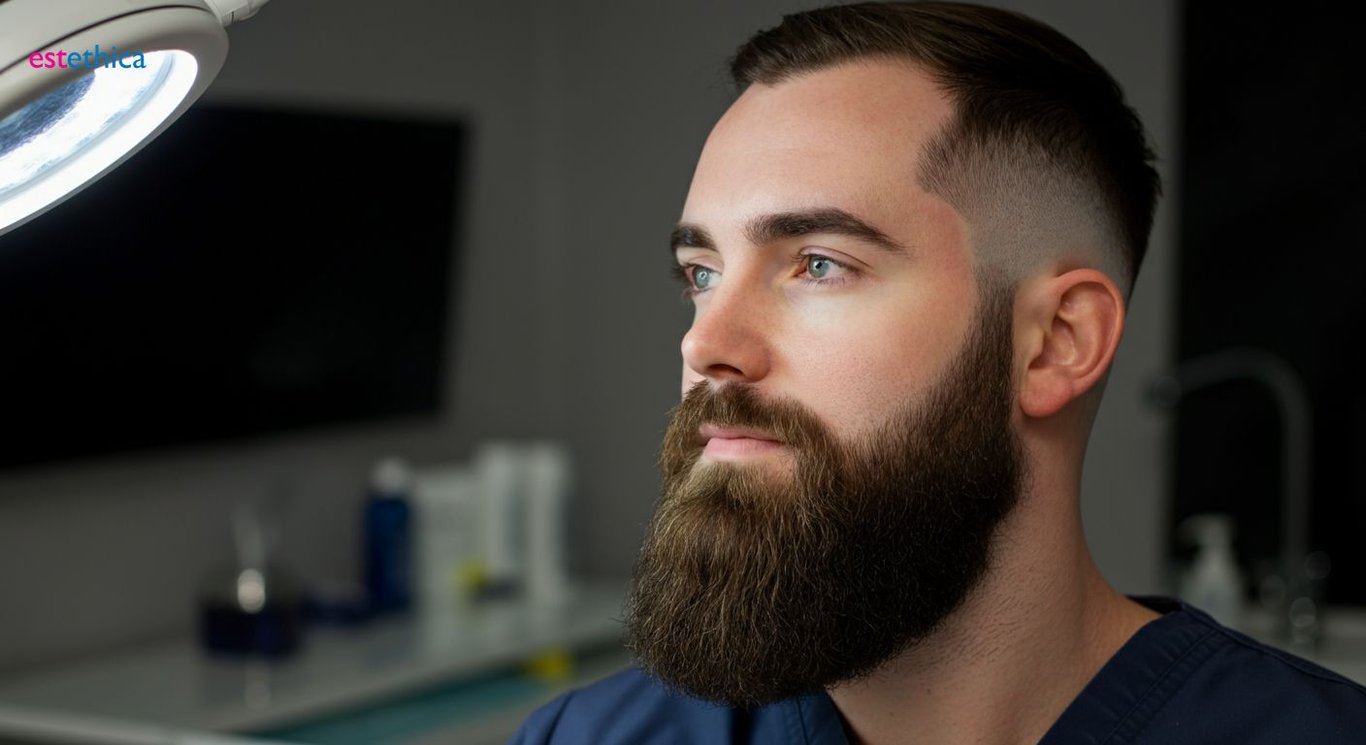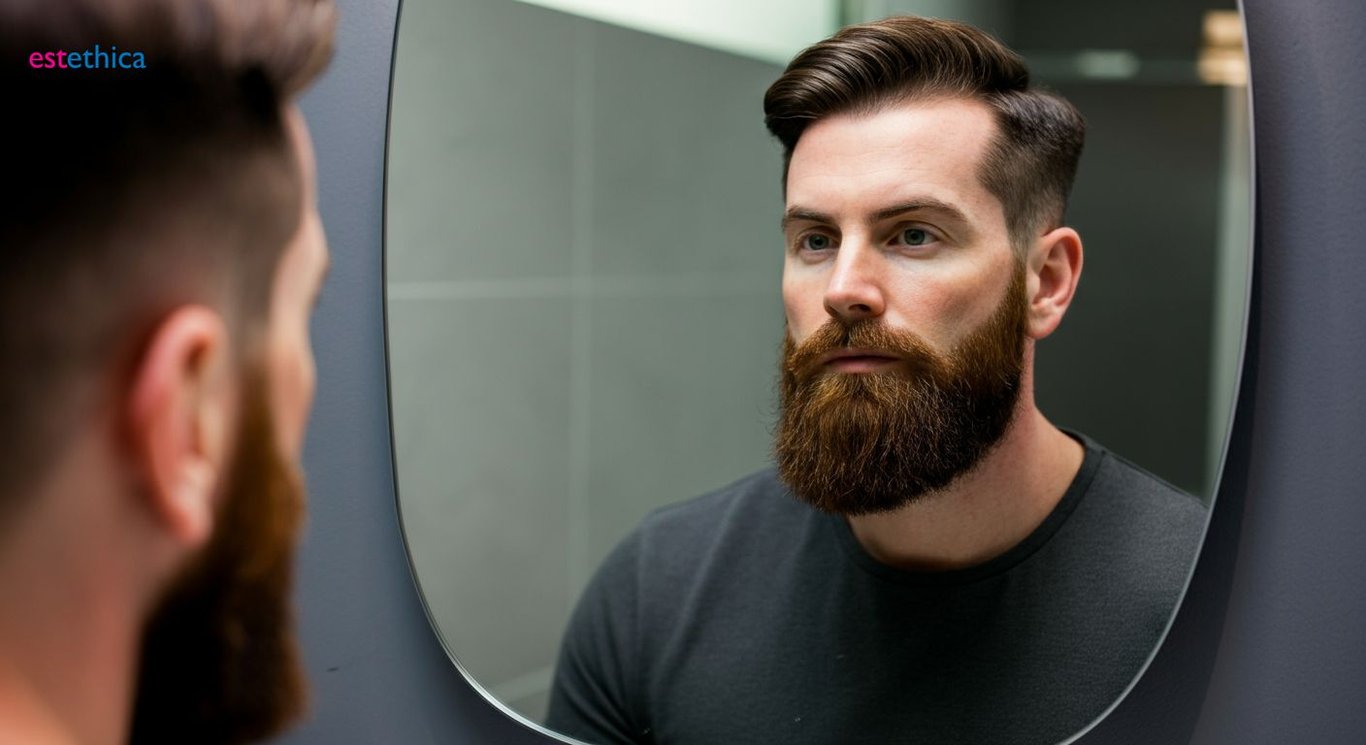🧔 Unleash Your Inner Viking: The Ultimate Beard Transplant Guide
Transform your beard with expert FUE techniques for a flawless, natural result. Explore your options today.
In the era of well-groomed beards symbolizing strength and style, many face the challenge of uneven or limited beard growth. Enter beard transplantation, a game-changing solution available to anyone dreaming of a robust beard. If your goal is to boast a captivating beard that mirrors the grandeur of Viking warriors, you have arrived at the right place. This ultimate guide will illuminate the paths leading from patchy to perfect, with options innovated for today's modern man.
From Patchy to Perfect: Understanding Beard Transplant Options
Exploring Techniques in Beard Restoration
Beard transplants have become a popular solution for men seeking fuller, more defined beards. The increased interest stems from the desire to enhance personal style and confidence. However, the success of a beard transplant largely depends on the technique used. Follicular Unit Extraction (FUE) is a frequently chosen method, known for its minimally invasive approach. In FUE, individual hair follicles are extracted from a donor area, typically the back of the head, and then transplanted to the beard area. Direct Hair Implantation (DHI) improves the precision of follicle placement. The method allows for better control over the angle and depth of each graft, leading to more natural-looking results. DHI uses a specialized pen-like tool to implant the follicles directly, minimizing handling and increasing the survival rate of the grafts.
- Follicular Unit Extraction (FUE): This technique is known for leaving minimal scarring, making it a preferred choice.
- Direct Hair Implantation (DHI): Enhances precision during the transplantation process, supporting better graft survival.
- Robotic Hair Transplant: Uses advanced technology for precise follicle extraction and placement, reducing human error.
What to Expect from a Beard Transplant Procedure
Undergoing a facial hair transplant involves several key steps, from the initial consultation to the final results. Initially, the patient meets with a specialist to discuss their goals and assess their suitability for the procedure. The surgeon evaluates the patient's hair characteristics, face shape, and specific desires to create a customized plan. The procedure begins with the extraction of hair follicles from the donor site, usually the back of the head, which is chosen because the hair in this area is genetically resistant to balding. The donor area is numbed with local anesthesia to ensure the patient feels no discomfort during the extraction process. The extracted follicles are then carefully prepared under a microscope. This ensures that only the healthiest follicles are selected for transplantation.
- Initial Consultation: Discuss goals to create a customized beard design, including density, shape, and overall appearance.
- Follicle Extraction: Individual hair follicles are harvested from a donor area, typically the back of the head.
- Graft Placement: Extracted hair follicles are carefully implanted into the beard area.

Follicular Unit Extraction (FUE) Beard: The Gold Standard?
Understanding the FUE Technique for Beard Transplants
Follicular Unit Extraction (FUE) is celebrated for its precision and minimally invasive nature, making it a preferred method for beard restoration. The procedure involves extracting individual hair follicles from a donor site, typically the scalp, and transplanting them to the beard area. This meticulous process allows for precise control over the placement, angle, and density of the new beard hair. Unlike older techniques that could leave linear scars, FUE's dot-like scars are virtually undetectable. The advantage of FUE lies in its ability to mimic the natural growth patterns of a beard. Surgeons can select the finest hairs for the edges and thicker ones for the core areas. FUE is so precise it allows for artistic shaping and styling that enhances the face's overall aesthetic. The method is favored for its ability to provide a natural-looking, dense beard without extensive downtime.
- Minimal Scarring: FUE leaves tiny, virtually invisible scars, offering a discreet solution for beard enhancement.
- Natural Look: Precise follicle placement replicates natural beard growth patterns for a seamless appearance.
- Customizable Design: Allows for tailored beard shapes and densities to meet individual aesthetic goals.
What Makes FUE the Preferred Choice for Beard Transplants?
Patients often search "what is the best beard transplant technique", highlighting the importance of choosing the right method. FUE distinguishes itself with its ability to provide a highly personalized approach. The flexibility in selecting and placing individual follicles ensures that the transplanted beard complements the patient's unique facial structure and desired style. Post-operative recovery is generally faster compared to other methods. Patients typically experience minimal discomfort and can resume normal activities within a few days. The success of FUE beard transplants is also attributed to the reduced trauma to the hair follicles during extraction and implantation, increasing the likelihood of graft survival and robust hair growth. This has led to many considering FUE as the benchmark in beard transplant procedures, as it combines artistry with science to deliver exceptional results. This is especially important for those considering a facial hair transplant.
- Personalized Approach: The surgeon designs the beard to match the individual's facial features and style preferences.
- Quicker Recovery: Minimal downtime allows patients to return to their daily routines more rapidly.
- Enhanced Graft Survival: Reduced trauma to follicles during the transplant process improves the chances of successful growth.

Beard Restoration: Is a Facial Hair Transplant Right for You?
Evaluating Your Candidacy for a Beard Transplant
Before undergoing a beard transplant, it’s essential to assess several key factors to determine if you are a suitable candidate. Your overall health plays a significant role, as certain medical conditions can affect the outcome and recovery process. A thorough skin evaluation is also crucial, as the quality and condition of your skin in both the donor and recipient areas can influence the success of the transplant. Consulting with a specialist is vital to evaluate hair density, growth patterns, and overall facial structure. Ideal candidates for a facial hair transplant often include men who have experienced hair loss due to trauma, scarring, or genetic predisposition. Additionally, those with realistic expectations and a commitment to following post-operative care instructions tend to achieve the best results.
- Overall Health: Pre-existing conditions can impact the transplant's success, emphasizing the importance of a health assessment.
- Skin Condition: Healthy skin in both donor and recipient sites is crucial for optimal graft survival and natural growth.
- Hair Loss Cause: Trauma, scarring, or genetics often make men good candidates for beard restoration.
Key Considerations Before Choosing Beard Restoration
Choosing beard restoration requires careful consideration of various factors, with understanding that the aesthetic appeal will greatly enhance your look. The extent of the area requiring treatment directly affects the duration and complexity of the beard transplant procedure. The expertise of the clinic and the surgeon performing the beard restoration are critical. It’s important to research their experience, view before-and-after photos, and read reviews. For instance, consider how beard styles after transplant summer may look. Men may find beard restoration a satisfying resolution to hair loss and achieve the desired aesthetic results. It's essential to thoroughly consider these elements to ensure complete satisfaction with the process and outcome. Consulting several clinics and specialists can provide a comprehensive outlook, allowing you to make well-informed decisions.
- Extent of Treatment Area: Larger areas require more grafts, which impacts the duration and complexity of the procedure.
- Clinic and Surgeon Expertise: Research the surgeon's credentials and experience to ensure quality results.
- Personal Satisfaction: Beard restoration can offer profound satisfaction for men dealing with hair loss, boosting self-esteem.

Beyond the Procedure: Achieving Natural-Looking Results After Your Beard Transplant
Navigating the Aftercare Essentials for Your New Beard
The journey to a fuller beard doesn't conclude after the procedure; it requires dedicated post-operative care to ensure the best possible results. Successfully maintaining a natural-looking beard hinges on strictly adhering to the aftercare instructions provided by your transplant clinic. For example, patients are generally advised to avoid strenuous activities for at least two weeks to prevent any disruption to the newly transplanted follicles. Proper maintenance combined with scheduled follow-up evaluations, is crucial for the long-term success of your beard transplant.
- Gentle Cleansing: Use a mild, recommended cleanser to keep the transplant area free from infection and promote healing.
- Hydration: keep skin hydrated to support the health of the newly transplanted area.
- Avoid Irritants: Steer clear of harsh chemicals and grooming products because these can cause inflammation.
Long-Term Maintenance and Expectations from a Beard Transplant
Achieving lasting, natural-looking results from a facial hair transplant necessitates ongoing maintenance. During recovery after beard transplant, initial swelling or redness is a common temporary side effect. Proper care, like applying cold compresses as directed, can expedite healing and improve the overall outcome. Abstaining from direct sunlight, rigorous grooming, and specific skincare products is vital to shield the transplant area as it heals and encourages new growth. For example, patients are often advised to use a soft-bristled brush to gently groom their beard. This helps to train the hair follicles and prevent ingrown hairs. In this way, beard restoration is an on going process.
- Consistent Grooming: Regular, gentle grooming helps train the new hairs and prevent ingrown hairs.
- Sun Protection: Protect the transplanted area from sun damage by using sunscreen or wearing a hat.
- Follow-Up Appointments:Regular check-ins with your surgeon can address any concerns and ensure optimal results.
FUE and DHI: Advanced Techniques for Natural-Looking Beard Transplants
estethica employs Follicular Unit Extraction (FUE) and Direct Hair Implantation (DHI) for beard transplants, ensuring minimally invasive procedures and precise follicle placement. These methods allow for customized beard designs, replicating natural growth patterns and achieving seamless, fuller beards tailored to individual facial structures.
estethica's surgeons are highly skilled in facial aesthetics and hair restoration, providing thorough consultations to assess patient suitability and create personalized treatment plans. Their expertise ensures optimal follicle selection and implantation, resulting in natural-looking and dense beard growth.
Comprehensive Aftercare: Ensuring Long-Term Success of Beard Transplants
estethica prioritizes patient safety and long-term results through detailed aftercare protocols, including gentle cleansing, hydration, and avoidance of irritants. Regular follow-up appointments and personalized guidance ensure optimal healing and sustained beard growth.
Patients consistently report high satisfaction with estethica's beard transplant procedures, citing the natural-looking results and improved confidence levels. The clinic's commitment to providing a personalized and supportive experience further enhances patient trust and satisfaction.
Frequently Asked Questions
What is a beard transplant and what are the common techniques used?
How do I know if I am a good candidate for beard restoration?
What can I expect in terms of recovery and aftercare following a beard transplant?
How does Follicular Unit Extraction (FUE) differ from other beard transplant techniques, and why is it considered a gold standard?
Achieve your aesthetic goals with estethica's expert guidance and personalized solutions.
📞 Book Your Free Consultation!